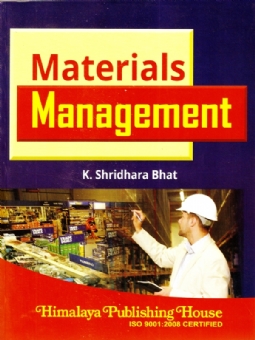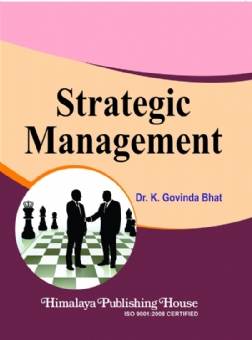In today’s rapidly evolving business landscape, where organisations face unprecedented challenges in talent retention, motivation, and productivity, the role of effective reward management has never been more critical. As organisations strive to achieve their strategic objectives, effective reward management emerges as a pivotal factor in nurturing a motivated and engaged workforce. Organisational success hinges on the dedication of its employees and dedication depends upon effective reward management.
Writing this book stems from a profound belief in helping aspiring managers, HR professionals and leaders with the tools to design and implement reward systems that drive performance and foster a positive workplace culture.
The book provides a comprehensive, contemporary, and critical review of the key issues in employee reward management in today’s organisations. The theme across the chapters is to comprehend a range of compensation and reward strategies to attain organisational goals. It delves into the multifaceted realm of employee rewards, aiming to provide both theoretical insights and practical illustrations drawn from diverse industries and organisational contexts.
It addresses the fundamental principles of reward management, encompassing grade and pay structures, recognition programmes, benefits administration, and the intricate interplay between financial and non-financial rewards. We must admit that this is not our only endeavor. On a much wider canvas, there is a recapitulation of the existing knowledge of employee reward management from organisational theorists whose work we have referred to.
The book is divided into five chapters:
- Chapter 1 deals with the fundamentals of the reward system and discusses various internal and external factors that impact reward management.
- Chapter 2 discusses integrated rewards philosophy, compensation principles and various elements of total rewards to link pay with performance.
- Chapter 3 focuses onreward management for special groups.
- Chapter 4 capturesan array of grade and pay structures.
- Chapter 5 covers the contributory role of trade unions in reward management systems.
Contents –
1. Reward Management
1.1 Introduction
1.2 What is Reward?
1.3 Definitions
1.4 Extrinsic & Intrinsic Reward
1.5 Psychological Basis of Rewards
1.6 Importance of Reward
1.7 Purpose of Rewards
1.8 Skills and Rewards
1.9 Aims of Rewards
1.10 Aims of Employee Rewards in India
1.11 Types of Rewards
1.12 Rewards in IT industry
1.13 Designing the Incentive Plan
1.14 Development of Reward System
1.15 Reward System and Total Rewards
1.16 Elements of Total Rewards
1.17 Reward System
1.18 Elements of Employee Rewards in India
1.19 Reward Strategy
1.20 Characteristics of Reward Strategy
1.21 Structure of Reward Strategy
1.22 Content of Reward Strategy
1.23 Specific Reward Initiatives
1.24 Guiding Principles: Reward Policies and Practices
1.25 Integrated Total Reward Strategy
1.26 Effective Reward Strategies
1.27 Assessing the Effectiveness of Reward Strategy
1.28 Reward Strategies of IBM Daksh e-Services
1.29 Reward Strategiesof IBM Daksh
1.30 Concerns, Issues and Trends in Reward Management
1.31 Purpose and Aim of a Pay Structure
1.32 Criteria for Pay Structures
1.33 Importance of Reward
1.34 Reward Systems in the 21st Century
1.35 Impact of Environment
1.36 Chapter Summary
1.37 Case Study for Discussion
1.38 Questions for Discussion
2. Compensation and Reward Stategies
2.1 Principles of Compensation Plans
2.2 Defining the Elements of Total Rewards
2.3 Integrated Rewards Philosophy
2.4 Designing Integrated Rewards
2.5 Sustainable Talent Management and Rewards Model
2.6 Strategic Compensation Plan for Talent Management
2.7 Finding the Path for Success
2.8 Performance Management and Reward
2.9 Chapter Summary
2.10 Case Study for Discussion
2.11 Questions for Discussion
3. Reward Management for Special Groups
3.1 Introduction
3.2 Eligibility for the Reward
3.3 Special Groups
3.3.1 Supervisors
3.3.2 Corporate Directors and Senior Executives
3.3.3 Executive Compensation
3.3.4 Rewarding Sales and Customer Service Staff
3.3.5 Rewarding Knowledge Workers/Professionals
3.3.6 Compensation for Contingent Workers
3.3.7 Shop Floor Pay
3.3.8 Managing the Reward System for Special Groups
3.3.8.1 Employees Benefits and Pensions
3.4 International Reward
3.5 Chapter Summary
3.6 Case Study for Discussion
3.7 Questions for Discussion
4. Grade and Pay Structures
4.1 Introduction
4.2 What is Grade Structure?
4.3 What is Pay Structure?
4.4 Cardinal Principles of Grade and Pay Structures
4.5 Advantages of Grade and Pay Structure
4.6 Types of Grade and Pay Structures
4.7 Summary Description of Major Grade and Pay Structures
4.8 Developing Grade and Pay Structures Approaches, Options and Guidelines
4.9 Team Pay
4.10 Paying for Organisational Performance
4.11 Chapter Summary
4.12 Questions for Discussion
5. Union Role in Reward Management
5.1 Introduction
5.2 Impact of Trade Union on Reward Determination and Reward System in India
5.3 Unions and Alternative Reward System
5.4 Government & Legal Issues in Reward System
5.5 National Wage Policy
5.6 Chapter Summary
5.7 Case Study for Discussion
5.8 Questions for Discussion
Bibliography







